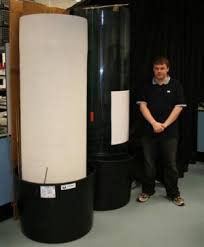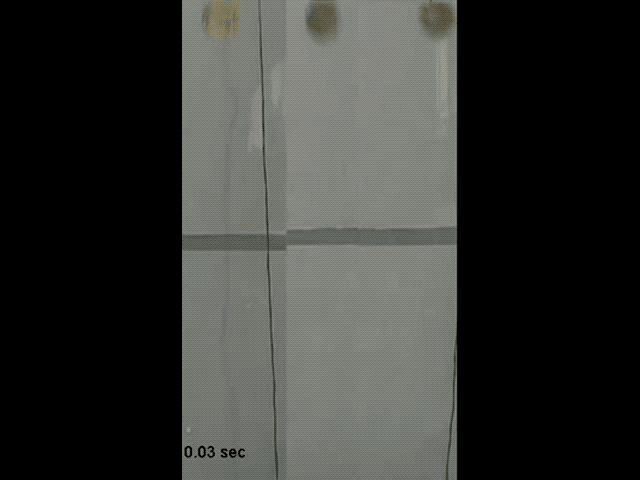Plastron Drag Reduction
In a vacuum, all objects will fall with the same acceleration, independent of their size. This was illustrated by Astronaut Dave Scott at the end of the last Apollo 15 moon walk in 1971. He dropped a hammer and a feather simultaneously and they were observed to strike the lunar surface at the same time (see below and click here for more details). However, on Earth we know from everyday experience that hammers fall faster than feathers because of air resistance.
As every parachutist knows, objects falling through air will attain a terminal velocity where the upward drag and buoyancy forces equal the downward gravitational force. The same is true when falling though any liquid. We wanted to find out whether an object surrounded by a film of air due to a superhydrophobic coating (known as a plastron) would be able to fall faster than an uncoated object due to a reduction in the upward drag force.
Experiment to investigate plastron drag reduction

To explore plastron drag reduction, we set up a large transparent tube of water (see above). We then compared the motion of 1½ inch diameter acrylic spheres with three different surface coatings (below). The sphere on the left is an acrylic sphere with a thin rough coating. In the centre, a similar acrylic sphere with a thin layer coating has an additional coating of a superhydrophobic paint, which results in plastron formation. The sphere on the right is the same as in the centre, but with an ethanol pre-treatment to suppress the formation of a plastron. (Note that insect physiologists use immersion in ethanol to remove plastrons, which is why we knew to use the same trick here.)

It is clear that the sphere with the plastron falls fastest, whereas there is no difference between the uncoated sphere and that treated with ethanol.
The reason for drag reduction is that the external flow transfers momentum across the water-air interface which generates circulation of air in the plastron. There is an optimum thickness for the plastron air layer at which the drag is minimized. If the air layer is too thin, it is not possible to have a circulation of air in the plastron and drag increases to the value that would be expected for a solid object directly in contact with the water. More about the theory of drag reduction can be found here.
We have seen that plastron drag reduction can make acrylic spheres fall faster. An obvious question is whether plastron formation can be utilised on boat hulls to make them go faster. For a debate about the possible relevance to the 2012 Olympics, see the RCUK/Royal Institution Cutting Edge 2012 debate below:
Publications
- Terminal velocity and drag reduction measurements on superhydrophobic spheres G. McHale, N.J. Shirtcliffe, C.R. Evans and M.I. Newton, Appl. Phys. Lett. 94 (2009) 064104
- Plastron induced drag reduction and increased slip on a superhydrophobic sphere G. McHale, M.R. Flynn and M.I. Newton, Soft Matter 7 (2011) 10100-10107
